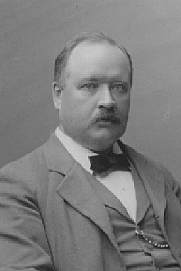|
Q10 – rubber-stamp ‘thinking’.
‘Reaction rates double for every 10oC rise in temperature’ –
I expect that you’ve heard this statement. It is, for some reason, very popular with
those studying biology; it is there that you find Q10, the ratio of reaction
rate at temperature T to that at
T + 10. The doubling is usually offered as
a fact of chemical (or biochemical) life; such a pity, then, that it isn’t true.
As originally promulgated in university texts it was ‘Reaction rates
roughly
double or triple…’; but in the (ever-increasing) sanitising found in A level
texts a number of fairly important words were jettisoned. Like ‘roughly’,
‘double or triple’. (Yes, guilty; if you’ve read my Philip
Allan texts there are
numerous omissions there, and no, I don’t like that.) A number of other important
caveats disappeared too, so let’s examine the ideas further.
The Arrhenius equation.
The rate of a chemical reaction is described by an empirically-determined equation of
the form
rate =
k [A]x [B]y
where
k is the rate constant, [A] and [B] are the molar concentrations of the
species A and B, and x and
y are the orders of reaction with respect to A
and to B. There may, of course, be only A, or there may be more than two species involved.
The concentrations do not depend significantly upon temperature; the term that changes
with a change in temperature is k. That is why all experiments on reaction
rates must be done at constant temperature. The temperature-dependence of
k is
described by the Arrhenius equation (S Arrhenius, 1889, building on earlier work of
J H van’t Hoff (1884)):
ln (k2/k1) = (Ea/R)
(1/T1
– 1/T2)
where k1 and
k2 are the rate constants at
(absolute, i.e. Kelvin) temperatures T1 and
T2,
Ea
is the activation energy for the reaction in J mol-1, and
R is the gas
constant, 8.314 J K-1 mol-1.
The term that is Q10 is k2/k1, and this is how
I shall refer to it from now on.
Two important points
What is not usually stated in A level kinetics:
- k2/k1
depends on the value of
Ea;
- k2/k1
depends on temperature – Q10 is not
constant. Increasing the temperature decreases k2/k1
.
A few calculations.
A value for Ea:
Firstly we shall find the value of Ea that would give a doubling of
reaction rate between 0oC and 10oC, i.e. for k2/k1
= 2. Then with this value of Ea we shall see what the effect is on
k2/k1
at two different 10oC ranges. Remember that the temperatures in the Arrhenius
equation must be in K.
For the calculation of Ea we take
k2/k1
= 2, T1 =
273 K, T2 = 283 K,
R = 8.314 J K-1
mol-1:
| Arrhenius: |
ln (k2/k1)
= (Ea/R) (1/T1 – 1/T2) |
|
| Therefore: |
ln (k2/k1)
/ (1/T1
– 1/T2) =
Ea/R |
|
| Substituting the values given: |
(8.314
x ln 2) / (1/273
– 1/283) = Ea |
|
| thus |
(8.314
x 0.693) / (1/273
– 1/283) = Ea |
|
and it is only arithmetic to show that Ea
= 44,500 J mol-1
= 44.5 kJ mol-1.
The effect of increasing the temperature on
k2/k1:
If we now use this value of Ea and find the value of
k2/k1
at different temperatures for this hypothetical reaction, i.e. evaluate
ln (k2/k1) = (44,500/8.314) (1/T1
– 1/T2)
more arithmetic shows the following (try it):
|
T1/K
|
T2/K
|
k2/k1 |
|
|
273 |
283 |
2.00 |
|
|
373 |
383 |
1.45 |
|
|
473 |
483 |
1.26 |
|
Indeed the value of k2/k1, our old – but now
unreliable – friend, Q10, falls as the temperature increases.
Would you need this in an A level exam? No. But at least you won’t fall into
rubber-stamp thinking on this topic again.
Lastly – the rate of a reaction seems to be determined by
Ea.
This is true to a good approximation (unlike Q10); but in fact it is the
free
energy of activation that is the important factor. But that’s for another day.
Ea
is pretty good until then.
|
